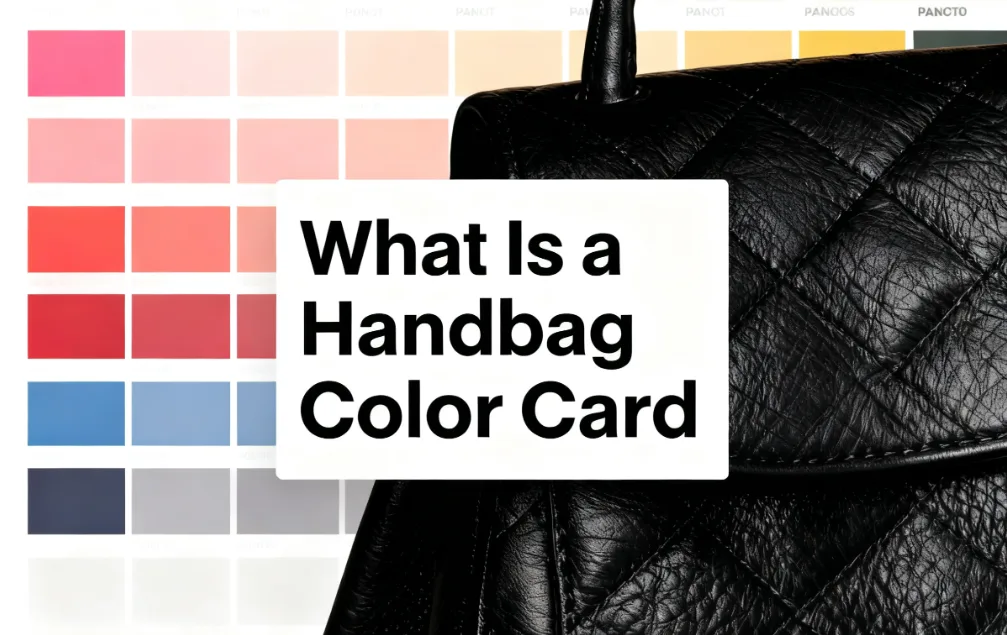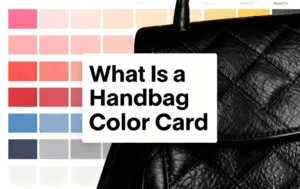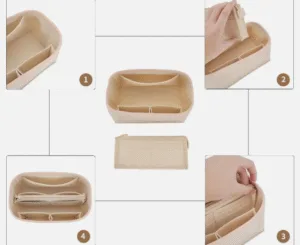Color is more than just an aesthetic choice in handbag design — it shapes emotion, brand perception, and even purchasing decisions. A customer might not remember the logo, but they’ll instantly recognize a brand by its signature shade of beige or deep burgundy. Ever wondered why some handbags are instantly recognizable, even without a label?
The secret lies in a well-defined color card strategy. By creating a consistent palette that guides every collection, designers and handbag makers ensure harmony across materials and seasons. This foundation of design consistency strengthens brand identity and makes every product unmistakably yours.
Contents
What Is a Handbag Color Card

A handbag color card is a systematic guide that includes all the approved colors a brand uses across its handbag collections. It helps designers and custom handbag manufacturers stay aligned, ensuring that every material—from leather to lining—matches perfectly. By standardizing shades and finishes, brands can control color accuracy and production efficiency, leading to better quality and more stable handbag price levels across collections.
Common types of handbag color cards include:
-
Seasonal Color Cards – focus on trendy tones like coral color handbags or mustard color handbags for specific fashion seasons.
-
Core Brand Color Cards – define signature hues such as brown color handbags, beige color handbags, or red color handbags.
-
Material Swatch Cards – combine leather, PU, or fabric samples to ensure consistent texture and tone.
Luxury brands like Louis Vuitton and Coach are known for maintaining strict color card systems. Whether it’s the perfect shade of burgundy color handbags or the soft neutrality of ivory color handbags, every hue is pre-defined and approved before mass production. This process ensures that their colorful designer handbags always reflect the same brand identity no matter where they’re made.
A study shows that consistent color use can increase brand recognition by up to 80% — proving that a well-built color card is not just about aesthetics, but also about brand power.
Why Designers Need a Color Card Strategy

A clear color card strategy is more than just a creative choice — it’s a production and branding necessity. For every designer or leather handbag manufacturer, maintaining consistent colors across seasons builds visual harmony and strengthens trust with customers. When your factory and design team follow the same palette, communication becomes faster and sampling more accurate.
1. Consistency Across Collections
Having a defined color palette ensures that every handbag fits your brand story. Whether it’s nude color handbags or purple color handbags, the shades remain true to your visual identity. This level of color consistency helps customers instantly recognize your brand even without seeing the logo.
2. Faster Production & Better Coordination
In OEM handbag factories, time is everything. A well-documented color card helps manufacturers reduce back-and-forth communication about shades and materials. With clear guidance, the sampling team can match leathers and fabrics more precisely, speeding up overall handbag production.
3. Reduced Waste & Cost Control
Without a color system, small mismatches in leather tones or dye batches can lead to rework or rejection. A color card prevents these costly errors, ensuring smoother production runs and more stable pricing — a key factor in maintaining competitive handbag price levels.
4. Stronger Brand Identity
A consistent palette becomes your brand’s silent signature. Just as Coach handbags red color or Louis Vuitton handbag colorful designs evoke instant recognition, your own palette can do the same. When your brand color story is cohesive, every new collection naturally feels connected — and unmistakably yours.
How to Build Your Handbag Color Card
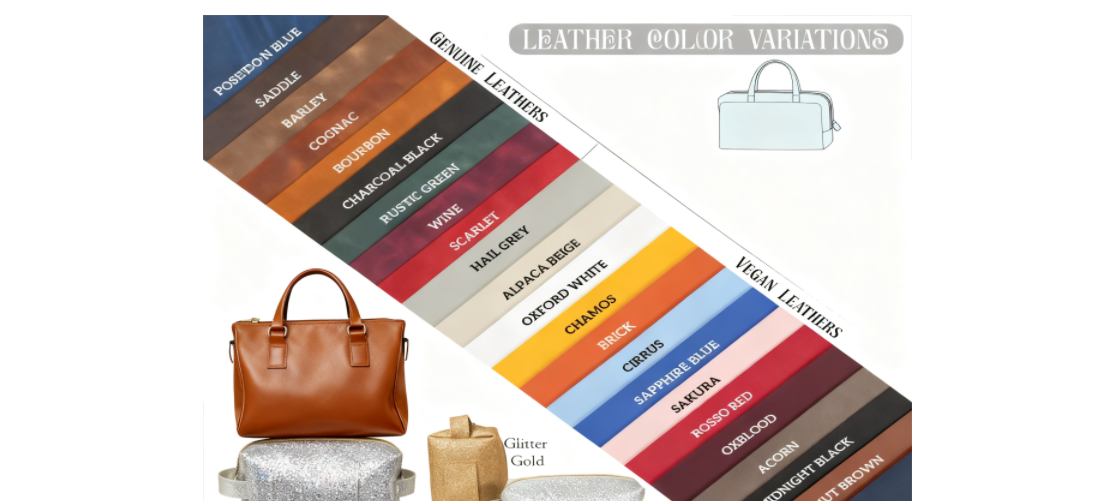
Creating a handbag color card may sound technical, but with a clear plan, it becomes one of the most valuable tools in your design process. Here’s how to build a system that supports creativity, efficiency, and long-term brand identity.
1. Study Market & Trend Colors
Start by analyzing fashion color forecasts from sources like Pantone or WGSN. Spot which hues are trending — from turquoise color handbags to magenta color handbags — and identify which align best with your brand story. This helps you stay modern without losing authenticity.
2. Collect Leather & Fabric Swatches
Work closely with your leather supplier or handbag manufacturer to gather material samples. Compare how the same tone looks on different textures — for instance, white color handbag leather may appear warmer or cooler depending on finish. Always review samples under both daylight and studio light to ensure accuracy.
3. Define Your Core Palette
Build your foundation around 5–10 timeless colors that can define your brand. These should include both neutral classics and seasonal accents. For example, pairing a steady taupe with a pop of coral gives your color handbags collection balance and recognizability.
4. Organize, Label, and Document
Create a digital and physical record of each color with codes, names, and material references. When collaborating with an ODM handbag factory, this documentation becomes the “language” everyone speaks — avoiding costly confusion during color sampling or mass production.
5. Share & Update Regularly
Your color card is a living document. Update it as materials evolve and trends shift. Regular communication between the design team, the handbag manufacturer, and the supplier ensures consistent output across every batch of colorful designer handbags.
Common Handbag Color Card Mistakes to Avoid
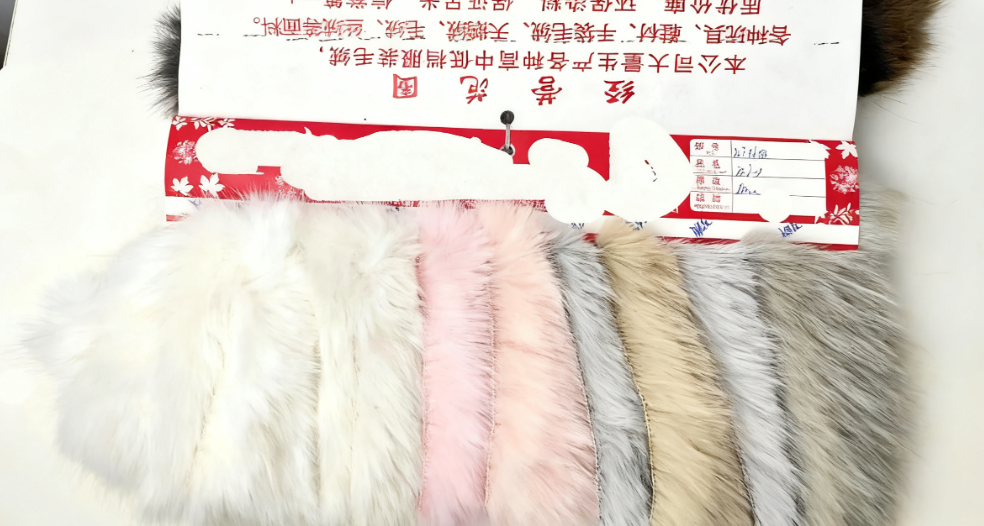
In its experience working with numerous clients, Sunteam has observed several common pitfalls that handbag designers often encounter. Even the most talented designers can face challenges if color management isn’t handled carefully. These mistakes not only slow down production but can also weaken brand recognition and compromise the final quality of the handbags.
-
Relying solely on screen colors without checking physical swatches
-
Frequently changing color schemes, which dilutes brand identity
-
Failing to coordinate leather and fabric colors with the handbag manufacturer
By being aware of these issues, designers can avoid costly errors and maintain a cohesive, professional look across all collections.
Conclusion
A well-planned handbag color card strategy is more than just a designer’s checklist — it’s the backbone of consistent branding, efficient handbag production, and a stronger connection with your customers. From nude color handbag neutrals to bold plum color handbags or oxblood color handbags, a cohesive palette ensures that every piece tells the same story.
So, next time you’re tempted to chase the latest trend without consulting your color card, remember: your handbags might end up looking like a “fashion rainbow” rather than a polished, unified collection. Keep your colors consistent, and your brand will speak louder than any logo ever could.
FAQ
Q1: What is a handbag color card?
A handbag color card is a systemized palette that outlines all approved colors for a brand’s collections. It ensures color consistency across materials, seasons, and manufacturing batches.
Q2: Why do designers need a color card strategy?
A color card helps designers, handbag manufacturers, and ODM bag factories maintain consistency, streamline handbag production, reduce waste, and strengthen brand identity.
Q3: How do I create a color card for my handbag line?
Start by researching trending colors, collecting leather and fabric swatches, defining your core palette, documenting each color, and sharing it with suppliers. Make it a living document to update with new materials or seasonal trends.
Q4: Can a color card improve customer recognition?
Yes! Using consistent shades like mustard color handbags or other signature tones increases brand recognition by up to 80%, helping your products stand out in a crowded market.
Q5: What common mistakes should designers avoid?
-
Relying solely on digital colors
-
Frequently changing brand palettes
-
Not syncing with the handbag manufacturer on materials

